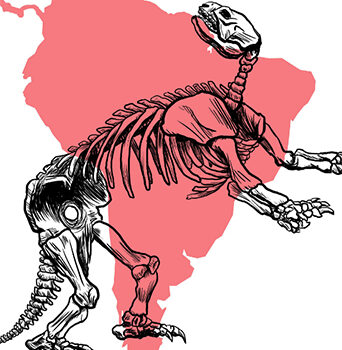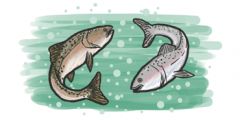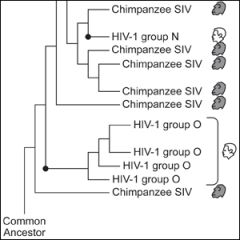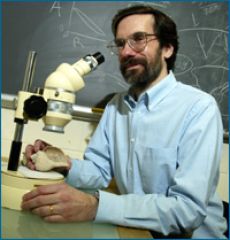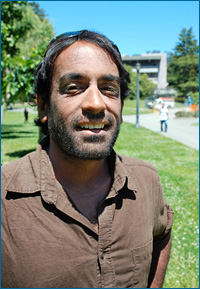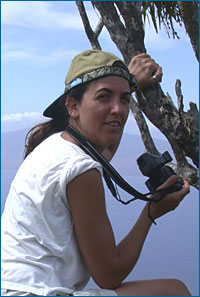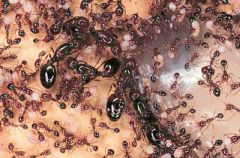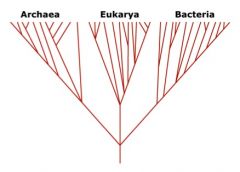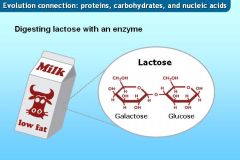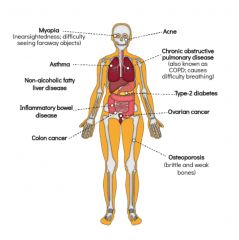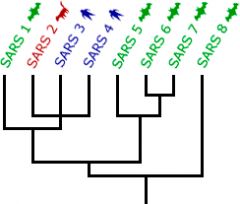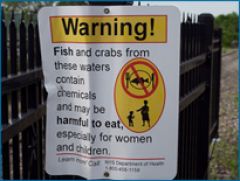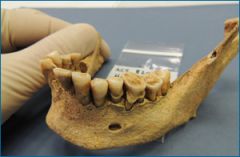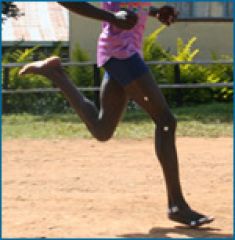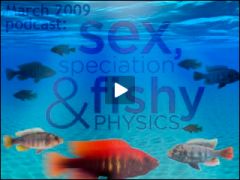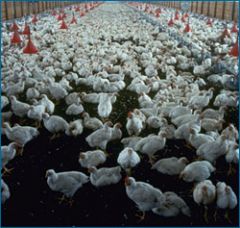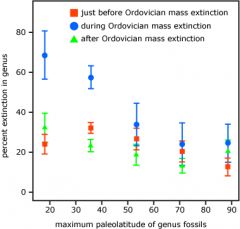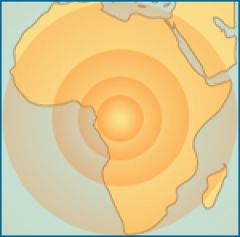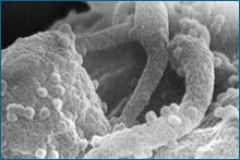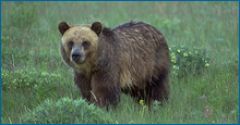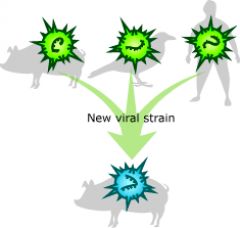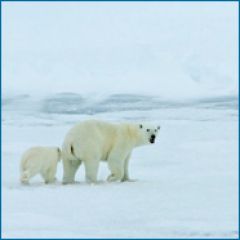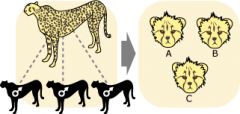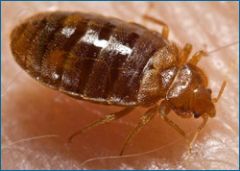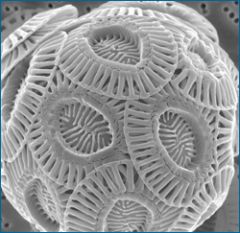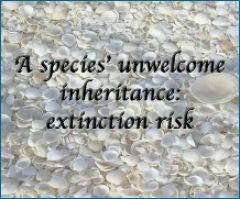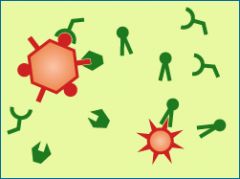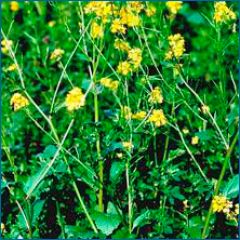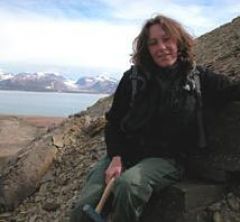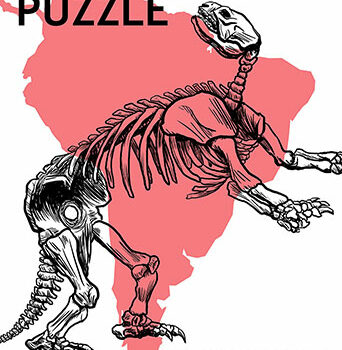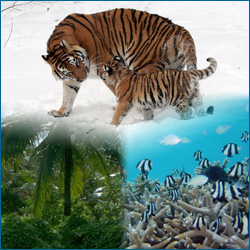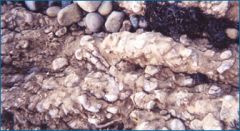Search by:
Found 55 resources:
Un rompecabezas Pleistoceno: Extinctión en América del Sur
Grade Level(s):
- 6-8
- 9-12
Source:
- UC Museum of Paleontology
Resource type:
- Comic
Time: 20 minutes
Overview
En este comic podrás seguir la investigación que hicieron María y Miguel para resolver un misterio paleontológico. Hace más de 11000 años, más del 80% de las especies de grandes animales de Sudamérica se extinguieron. ¿Por qué pasó? (Disponible en inglés, español y portugués.)
Relevance of evolution: Medicine
Grade Level(s):
- 9-12
Source:
- UC Museum of Paleontology
Resource type:
- Article
Time: 30-40 minutes
Overview
Explore just a few of the many cases in which evolutionary theory helps us understand and treat disease. Bacterial infections, HIV, and Huntington's disease are highlighted.
Relevance of evolution: Conservation
Grade Level(s):
- 9-12
Source:
- UC Museum of Paleontology
Resource type:
- Article
Time: 30-40 minutes
Overview
Explore just a few of the many cases in which evolutionary theory helps us form conservation strategies.
Relevance of evolution: Agriculture
Grade Level(s):
- 9-12
Source:
- UC Museum of Paleontology
Resource type:
- Article
Time: 20-30 minutes
Overview
Explore just a few of the many cases in which evolutionary theory helps us secure and improve the world's crops. Genetic diversity, disease resistance and pest control are highlighted.
Parasites and pathogens take the leap
Grade Level(s):
- 9-12
Source:
- Evolution: Education and Outreach
Resource type:
- Article
Time: 20 minutes
Overview
Diseases like SARS, HIV, and West Nile Virus may be new to humans, but they are old news to other species. These and other emerging infectious diseases have recently added humans to the list of hosts they infect. An evolutionary perspective can help us better understand and, we hope, control this problem.
This article appears at SpringerLink.
How to survive a mass extinction: The work of David Jablonski
Grade Level(s):
- 9-12
- 13-16
Source:
- UC Museum of Paleontology
Resource type:
- Research profile
Time: 40 minutes
Overview
Through detailed analysis of patterns in the fossil record, scientist David Jablonski reconstructs the rules that helped dictate who lived and died in past mass extinctions. This research profile describes his surprising discoveries and their disturbing implications for the biodiversity crisis today.
Using trees to uproot HIV: The work of Satish Pillai
Grade Level(s):
- 9-12
- 13-16
Source:
- UC Museum of Paleontology
Resource type:
- Research profile
Time: 30 minutes
Overview
This research profile follows scientist Satish Pillai as he studies the evolution of HIV within infected individuals. His research uses the tools of phylogenetics to investigate vaccine development and the possibility of curing the disease.
Using trees to understand plants: The work of Chelsea Specht
Grade Level(s):
- 9-12
- 13-16
Source:
- UC Museum of Paleontology
Resource type:
- Research profile
Time: 30 minutes
Overview
This research profile follows scientist Chelsea Specht as she pieces together the evolutionary history of tropical plants and their pollinators--and in the process, tries to figure out how to conserve endangered species.
From the origin of life to the future of biotech: The work of Andy Ellington
Grade Level(s):
- 9-12
- 13-16
Source:
- UC Museum of Paleontology
Resource type:
- Research profile
Time: 30-40 minutes
Overview
This research profile examines how scientist Andy Ellington has co-opted the power of artificial selection to construct new, useful molecules in his lab. The results of his work could help protect us from terrorist attacks and fight HIV and cancer.
Fire ants invade and evolve
Grade Level(s):
- 9-12
- 13-16
Source:
- UC Museum of Paleontology
Resource type:
- Article
Time: 40 minutes
Overview
Understanding the evolution of fire ants may help scientists control the spread of these pests, which have already taken over much of the U.S.
Evolution connection: Ribosomes
Grade Level(s):
- 13-16
Source:
- UC Museum of Paleontology
Resource type:
Time: 5 minutes
Overview
This short slide set explains how some antibiotics target the bacterial ribosome and don't attack the ribosomes in our own cells through a quirk of evolutionary history. Save the slide set to your computer to view the explanation and notes that go along with each slide.
Evolution connection: Proteins, carbohydrates, and nucleic acids
Grade Level(s):
- 13-16
Source:
- UC Museum of Paleontology
Resource type:
Time: 5 minutes
Overview
This short slide set weaves basic information about carbohydrates, proteins, and nucleic acids into one evolutionary story regarding the evolution of lactose tolerance, which relates to students' everyday lives. Save the slide set to your computer to view the explanation and notes that go along with each slide.
Evolution and health: What is a mismatch disease?
Grade Level(s):
- 9-12
Source:
- BiteScis
Resource type:
- Classroom activity
Time: 50 minutes
Overview
In this reading-, writing-, and discussion-based activity, students learn about how changes in the environment can influence the phenotype of organisms. More specifically, students will be investigating the concept of a mismatch disease and how it relates to many present human phenotypes that are no longer beneficial.
Evolution and Antibiotic Resistance
Grade Level(s):
- 9-12
- 13-16
Source:
- WGBH
Resource type:
- Classroom activity
Time: One to three class periods
Overview
Students learn why evolution is at the heart of a world health threat by investigating the increasing problem of antibiotic resistance in such menacing diseases as tuberculosis.
Evo in the News: When fighting leukemia, evolutionary history matters
Grade Level(s):
- 13-16
Source:
- UC Museum of Paleontology
Resource type:
- Evo in the News article
Time: 30 minutes
Overview
This news brief, from December 2011, describes how evolutionary history can factor into the success of a bone marrow transplant.
Evo in the news: Tracking SARS back to its source
Grade Level(s):
- 9-12
- 13-16
Source:
- UC Museum of Paleontology
Resource type:
- Evo in the News article
Time: 15 minutes
Overview
This news brief, from January of 2006, traces the source of the SARS virus. Using phylogenetics, biologists have come up with a plausible path of transmission which may help us prevent future outbreaks of diseases such as HIV, SARS, and West Nile virus.
Evo in the news: Toxic river means rapid evolution for one fish species
Grade Level(s):
- 9-12
- 13-16
Source:
- UC Museum of Paleontology
Resource type:
- Evo in the News article
Time: 10 minutes
Overview
This news brief from March 2011 examines the genetic basis for the evolution of resistance to PCBs in the Hudson River tomcod. Though this is great for the tomcod, what might it mean for other organisms in the ecosystem?
Evo in the news: Tough conservation choices? Ask evolution
Grade Level(s):
- 9-12
- 13-16
Source:
- UC Museum of Paleontology
Resource type:
- Evo in the News article
Time: 20 minutes
Overview
The earth is facing a biodiversity crisis. Nearly 50% of animal and plant species could disappear within our lifetime. To stem this rapid loss of biodiversity, we'll need to act quickly — but where should we begin? This news brief, from December 2008, explains how evolutionary history can help us set conservation priorities.
Evo in the news: The recent roots of dental disease
Grade Level(s):
- 9-12
- 13-16
Source:
- UC Museum of Paleontology
Resource type:
- Evo in the News article
Time: 20 minutes
Overview
This news brief from March 2013 describes new research suggesting that human dietary changes associated with the invention of agriculture and the Industrial Evolution caused an epidemic of tooth decay and gum disease. This link between diet and oral health is an example of a mismatch to modernity, a case in which a disease results from a modern lifestyle feature that our lineage has not experienced during the course of its evolutionary history.
Evo in the news: The evolutionary history of jogging
Grade Level(s):
- 9-12
- 13-16
Source:
- UC Museum of Paleontology
Resource type:
- Evo in the News article
Time: 30 minutes
Overview
This news brief from March 2010 describes a new fitness trend: barefoot running. Though it might sound like just another fitness fad, soon to go the way of hula-hoops or jazzercise, this trend has a surprising connection to evolution.
Evo in the news: Superbug, super-fast evolution
Grade Level(s):
- 9-12
- 13-16
Source:
- UC Museum of Paleontology
Resource type:
- Evo in the News article
Time: 20 minutes
Overview
Methicillin-resistant staph infections now contribute to more US deaths than does HIV. This news brief from April of 2008 explains the quirks of bacterial evolution that make them such a threat.
Evo in the news: Sex, speciation, and fishy physics
Grade Level(s):
- 9-12
- 13-16
Source:
- UC Museum of Paleontology
Resource type:
- Evo in the News article
Time: 20 minutes
Overview
More than 500 species of cichlid fish inhabit Africa's Lake Victoria. This news brief from March 2009 explains new research suggesting that the physics of light may have played an important role in cichlid diversification and in the recent drop in their diversity.
Evo in the news: No more mystery meat
Grade Level(s):
- 9-12
- 13-16
Source:
- UC Museum of Paleontology
Resource type:
- Evo in the News article
Time: 20 minutes
Overview
This news brief from April 2013 describes new research on the origin of American cattle breeds. The story told by the cows' genes crisscrosses the trajectory of human evolutionary history from wild aurochs that lived alongside Neanderthals, to Christopher Columbus and, ultimately, the American West.
Evo in the news: Livestock kick a drug habit
Grade Level(s):
- 9-12
- 13-16
Source:
- UC Museum of Paleontology
Resource type:
- Evo in the News article
Time: 10 minutes
Overview
This news brief, from September of 2005, describes the FDA ban on the use of the antibiotic Baytril in poultry production. The decision was made in order to reduce the danger presented by the evolution of antibiotic resistant bacteria.
Evo in the News: Lessons for today in ancient mass extinctions
Grade Level(s):
- 13-16
Source:
- UC Museum of Paleontology
Resource type:
- Evo in the News article
Time: 30 minutes
Overview
This news brief, from May 2012, describes new research on the end-Ordovician mass extinction and the lessons we might glean about extinctions going on around us today.
Evo in the news: Influenza, an ever-evolving target for vaccine development
Grade Level(s):
- 9-12
- 13-16
Source:
- UC Museum of Paleontology
Resource type:
- Evo in the News article
Time: 20 minutes
Overview
Some vaccines provide lifelong protection with one or a few doses, but the flu requires a new shot every year. And in some years, the flu shot is hardly effective at all. Why is the flu vaccine different from so many other vaccines? This news brief from February 2013 provides the evolutionary explanation.
Evo in the news: HIV’s not-so-ancient history
Grade Level(s):
- 9-12
- 13-16
Source:
- UC Museum of Paleontology
Resource type:
- Evo in the News article
Time: 20 minutes
Overview
First described in 1981, HIV is a distinctly modern disease. But for how long before its discovery did HIV lurk unnoticed in human populations? This news brief from November 2008 describes new research offering insight into when (and how) HIV got its start.
Evo in the news: Ghosts of epidemics past
Grade Level(s):
- 9-12
- 13-16
Source:
- UC Museum of Paleontology
Resource type:
- Evo in the News article
Time: 20 minutes
Overview
HIV and malaria both constitute global health threats, respectively affecting more than 30 million and 200 million people worldwide. This news brief from October 2008 describes new research that reveals an unexpected evolutionary link between the two.
Evo in the news: Evolving conservation strategies
Grade Level(s):
- 9-12
- 13-16
Source:
- UC Museum of Paleontology
Resource type:
- Evo in the News article
Time: 15 minutes
Overview
This news brief, from June 2007, explains how biologists are using evolutionary theory to protect the biodiversity that exists today and that may evolve tomorrow.
Evo in the news: Evolutionary evidence takes the stand
Grade Level(s):
- 9-12
- 13-16
Source:
- UC Museum of Paleontology
Resource type:
- Evo in the News article
Time: 20 minutes
Overview
This news brief, from January of 2007, describes the role of phylogenetic evidence in a Libyan court case. Six medical workers have been convicted of injecting children with HIV-tainted blood - but the evolutionary history of the virus paints a different picture.
Evo in the news: Evolution from a virus’s view
Grade Level(s):
- 9-12
- 13-16
Source:
- UC Museum of Paleontology
Resource type:
- Evo in the News article
Time: 20 minutes
Overview
This news brief from December 2007 describes a new virulent strain of the common cold and examines how and why virulence evolves.
Evo in the news: Evolution at the scene of the crime
Grade Level(s):
- 9-12
- 13-16
Source:
- UC Museum of Paleontology
Resource type:
- Evo in the News article
Time: 15 minutes
Overview
This news brief, from March 2006, describes how DNA fingerprinting is being used to prosecute and exonerate the accused. DNA fingerprinting relies on the processes of mutation and genome evolution.
Evo in the news: Evolution and the avian flu
Grade Level(s):
- 9-12
- 13-16
Source:
- UC Museum of Paleontology
Resource type:
- Evo in the News article
Time: 10 minutes
Overview
This news brief, from November of 2005, describes the threat of avian flu. The stage is set for this virus to evolve into a strain that could cause a deadly global pandemic.
Evo in the news: Coping with climate change
Grade Level(s):
- 9-12
- 13-16
Source:
- UC Museum of Paleontology
Resource type:
- Evo in the News article
Time: 20 minutes
Overview
This news brief from May 2009 explores the difference between phenotypic plasticity and evolutionary change in relation to the media's coverage of climate change.
Evo in the news: Conserving the kakapo
Grade Level(s):
- 9-12
- 13-16
Source:
- UC Museum of Paleontology
Resource type:
- Evo in the News article
Time: 15 minutes
Overview
This news brief, from April 2006, chronicles how researchers are using evolutionary theory to guide their strategies for conserving a critically endangered parrot - with some impressive results!
Evo in the news: Cheating cheetahs prosper
Grade Level(s):
- 9-12
- 13-16
Source:
- UC Museum of Paleontology
Resource type:
- Evo in the News article
Time: 15 minutes
Overview
Biologists have discovered that female cheetahs consistently seek out multiple mates. This news brief, from July 2007, explains how the evolutionary implications of this behavior may help conservation efforts targeting these endangered animals.
Evo in the news: Better biofuels through evolution
Grade Level(s):
- 9-12
- 13-16
Source:
- UC Museum of Paleontology
Resource type:
- Evo in the News article
Time: 20 minutes
Overview
This news brief from April 2009 describes how synthetic biologists are using the process of directed evolution to improve the efficiency of biofuel production.
Evo in the news: Bed bugs bite back thanks to evolution
Grade Level(s):
- 9-12
- 13-16
Source:
- UC Museum of Paleontology
Resource type:
- Evo in the News article
Time: 15 minutes
Overview
This news brief of September 2010 examines the resurgence of bed bugs throughout the country, and the real bad news is that those bed bugs have evolved resistance to the chemicals most commonly used for eradication.
Evo in the news: Antibiotic resistant bacteria at the meat counter
Grade Level(s):
- 9-12
- 13-16
Source:
- UC Museum of Paleontology
Resource type:
- Evo in the News article
Time: 20 minutes
Overview
This news brief from May 2013 describes research showing that a large percentage of the meat in supermarkets is contaminated with antibiotic resistant bacteria. An evolutionary perspective explains how antibiotic resistance arises in the first place and why the prevalence of resistant bugs in livestock has health professionals and scientists worried.
Evo in the news: Another perspective on cancer
Grade Level(s):
- 9-12
- 13-16
Source:
- UC Museum of Paleontology
Resource type:
- Evo in the News article
Time: 20 minutes
Overview
This news brief, from October of 2007, describes the evolutionary underpinnings of cancer. Recognizing cancer as a form of cellular evolution helps explain why a cure remains elusive and points the way toward new treatments.
Evo in the news: An antibiotic that exploits evolutionary history
Grade Level(s):
- 13-16
Source:
- UC Museum of Paleontology
Resource type:
- Evo in the News article
Time: 15 minutes
Overview
In October 2011, the World Health Organization announced that tuberculosis cases are on the decline for the first time in at least 20 years. Our battle against this ancient disease has been fought, in part, through the use of antibiotics like streptomycin. This news brief describes the 1.8 billion year evolutionary history behind these drugs.
Evo in the News: Acidic oceans prompt evolution
Grade Level(s):
- 13-16
Source:
- UC Museum of Paleontology
Resource type:
- Evo in the News article
Time: 30 minutes
Overview
This news brief, from October 2012, describes new research into the evolutionary response that ocean acidification may prompt in some plankton species.
Evo in the news: A species’ unwelcome inheritance – extinction risk
Grade Level(s):
- 13-16
Source:
- UC Museum of Paleontology
Resource type:
- Evo in the News article
Time: 30 minutes
Overview
Even as the world loses species at an unprecedented rate, conservationists are struggling to save them. But where should they focus their efforts? This news brief from September 2009 describes new research suggesting that evolutionary history is an important factor in determining which species are at the gravest risk of extinction.
Evo in the news: A chink in HIV’s evolutionary armor
Grade Level(s):
- 9-12
- 13-16
Source:
- UC Museum of Paleontology
Resource type:
- Evo in the News article
Time: 20 minutes
Overview
Medical researchers have spent billions of dollars and many decades trying to develop an HIV vaccine but have, thus far, failed. Why is an HIV vaccine so elusive? This news brief from March 2007 explains how HIV's rapid rate of evolution challenges medicine and describes a new discovery that may allow vaccine developers to sidestep that evolution.
Evo in the news: “Superweed” discovered in Britain?
Grade Level(s):
- 9-12
- 13-16
Source:
- UC Museum of Paleontology
Resource type:
- Evo in the News article
Time: 10 minutes
Overview
This news brief, from October of 2005, describes the discovery of an herbicide resistant weed in Britain and illustrates the relationship between genetic engineering and evolution.
Angling for evolutionary answers: The work of David O. Conover
Grade Level(s):
- 9-12
- 13-16
Source:
- UC Museum of Paleontology
Resource type:
- Research profile
Time: 30 minutes
Overview
Human activity has certainly affected our physical environment - but it is also changing the course of evolution. This research profile follows scientist David O. Conover as he investigates the impact of our fishing practices on fish evolution and discovers what happened to the big ones that got away.
Ancient fossils and modern climate change: The work of Jennifer McElwain
Grade Level(s):
- 9-12
- 13-16
Source:
- UC Museum of Paleontology
Resource type:
- Research profile
Time: 40 minutes
Overview
Wondering how global warming will affect our planet? Scientist Jennifer McElwain studies the fossil record in order to learn more about how global warming has affected life on Earth in the past and how it might affect life on Earth in the future.
Why study the tree of life?
Grade Level(s):
- 9-12
Source:
- Peabody Museum of Natural History
Resource type:
- Video
Time: 4 minutes
Overview
This short video provides several examples of the practical applications of phylogenetics.
This resource is available from the Peabody Museum of Natural History.
Battling bacterial evolution: The work of Carl Bergstrom
Grade Level(s):
- 9-12
- 13-16
Source:
- UC Museum of Paleontology
Resource type:
- Research profile
Time: 30-40 minutes
Overview
This research profile examines how the scientist Carl Bergstrom uses computer modeling to understand and control the evolution of antibiotic resistant bacteria in hospitals.
A Pleistocene Puzzle: Extinction in South America
Grade Level(s):
- 6-8
- 9-12
Source:
- UC Museum of Paleontology
Resource type:
- Comic
Time: 20 minutes
Overview
In this comic, you'll follow the investigation of scientists Maria and Miguel as they solve a paleontological mystery. About 11,000 years ago, more than 80% of the large animal species in South America went extinct. Why did it happen? (Available in English and Spanish)
Las chinches de cama pican de nuevo gracias a la evolución
Grade Level(s):
- 9-12
- 13-16
Source:
- UC Museum of Paleontology
Resource type:
- Evo in the News article
Time: 15 minutes
Overview
Las chinches de cama puede parecer un viejo problema pasado de moda, sin embargo ahora están de vuelta — y con venganza. Hace cincuenta años, estas plagas chupadoras de sangre estaban casi erradicadas en los Estados Unidos gracias, en parte, al uso de pesticidas como el DDT. Hoy, se arrastran entre las sabanas — y atormentan a los desgraciados soñadores — en todo el país...
¿Decisiones de conservación difíciles? Pregúntale a la evolución
Grade Level(s):
- 9-12
- 13-16
Source:
- UC Museum of Paleontology
Resource type:
- Evo in the News article
Time: 20 minutes
Overview
¿Si tu casa se incendiara, que es lo que te llevarías cuando estés huyendo? La decisión puede ser difícil entre juguetes de niños, álbumes de fotos y documentos importantes compitiendo por tu atención. Desafortunadamente, nos enfrentamos con una decisión difícil cuando tenemos que definir nuestros esfuerzos de conservación. Las actividades humanas podrían estar desencadenado la sexta extinción masiva de la Tierra...
Sexo, especiación y física subacuática
Grade Level(s):
- 9-12
- 13-16
Source:
- UC Museum of Paleontology
Resource type:
- Evo in the News article
Time: 20 minutes
Overview
Evolución en las noticias relata una reciente historia que señala como comprender física básica puede revelar como la evolución esta ocurriendo hoy — en especial, como la física de la luz tiene influencia sobre la selección sexual, especiación y el colapso de la biodiversidad, producto de la polución causada por los humanos...
La herencia inoportuna de una especie: riesgo de extinción
Grade Level(s):
- 13-16
Source:
- UC Museum of Paleontology
Resource type:
- Evo in the News article
Time: 30 minutes
Overview
El tema de septiembre, biodiversidad y conservación, en celebración del Año de la Ciencia, la historia de este mes esta basada en el enemigo de la diversidad: la extinción. El mundo se enfrenta a lo que podría ser la sexta extinción masiva. Estamos perdiendo especies a un ritmo sin precedentes — 100 a 1000 veces más alto que a lo largo de la mayor parte de la historia de la tierra...
Mejores biocombustibles gracias a la evolución
Grade Level(s):
- 9-12
- 13-16
Source:
- UC Museum of Paleontology
Resource type:
- Evo in the News article
Time: 20 minutes
Overview
Actualmente, la mayoría de nosotros llenamos nuestro tanque de gasolina con combustibles fósiles, es decir, restos de plantas y animales que murieron muchos millones de años atrás y eventualmente se convirtieron en petróleo — pero, por supuesto, esto no puede perdurar para siempre. El petróleo es un recurso limitado y en algún momento se va a terminar. Para ayudar a solucionar este problema, muchos científicos, políticos, gente de negocios y ciudadanos preocupados han puesto sus esperanzas en los biocombustibles...

